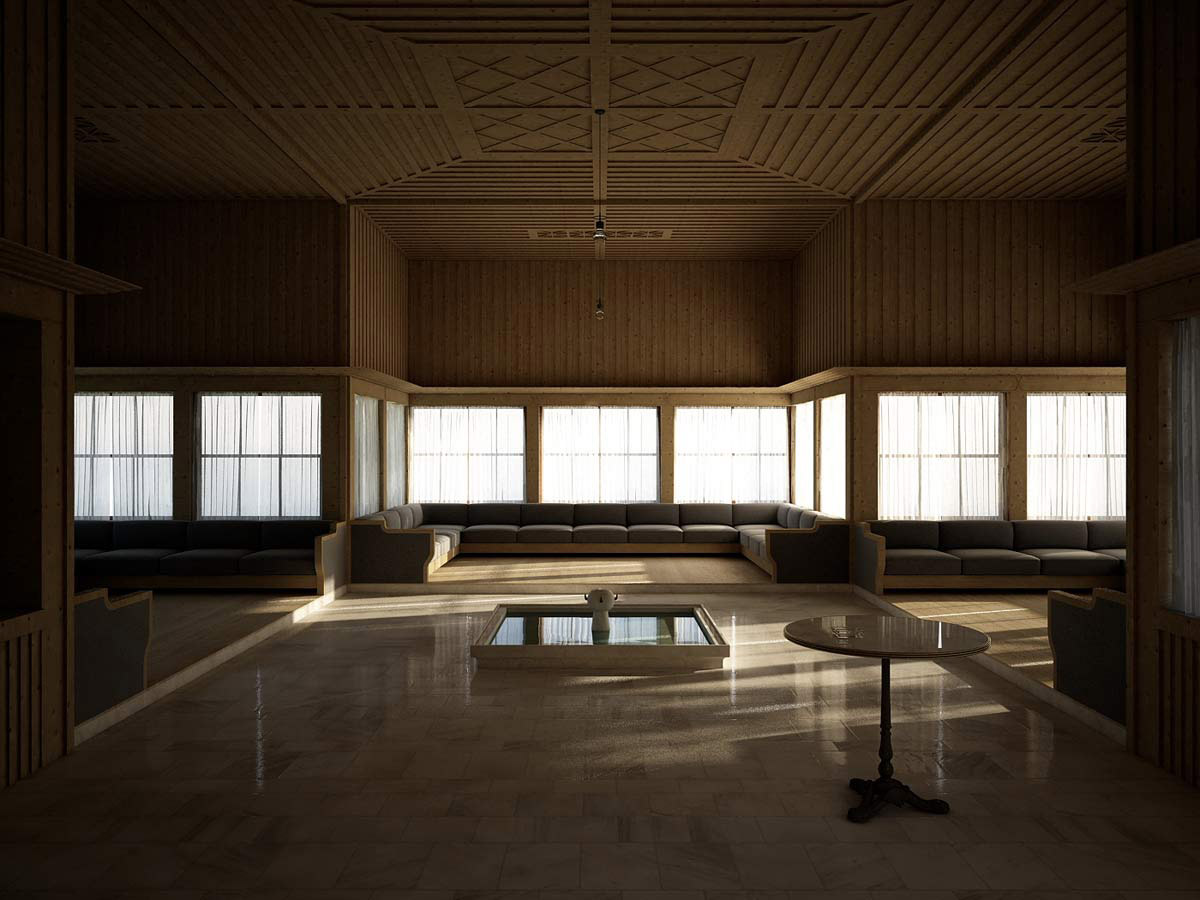Artist:
Victor Burgin (born 1941 in Sheffield, England; lives and works in San Francisco, California, USA).
Materials:
Wall text and digital image projection, color, silent; loop duration 4 minutes 5 seconds.
Description:
“In recent years, Burgin’s photographic, textual and video works have been primarily reactions to cities and buildings that he has visited. The buildings have included Mies van der Rohe’s Barcelona Pavilion, Rudolph Schindler’s Kings Road House in Los Angeles, and the Tempelhof airport building in Berlin.
“The point of departure for the work is the Taslik Kahve, a coffee house built by Sedad Hakki Eldem in the middle of the last century as a synthesis of Ottoman style and twentieth-century Modernism. In the late 1980s, the building (and its surrounding park) had to yield to a modern hotel. The building was torn down in part and in part rebuilt as a tourist restaurant. Burgin sees the building as an allegory of modern Turkey: Constructed as a coffee house open to the public and rooted in its own tradition, it was swept away by a Western-oriented globalism. Burgin has decided on an unusual form of photographic representation, setting aside the physical camera in favor of a virtual one. He assembles photographic material to create a 3-D model of the building which he can move through with a virtual camera. On the work’s second level, presented by Burgin as a line of text running along the wall of the second gallery space, fiction and reality are again intertwined in the narration. Burgin carries out his image and text work as an “excavation” of the building and its manifold real and fictive contents. Logically, it premiered at the Istanbul Archeological Museum.”
—Press release, “A Place to Read,” Campagne Première website.
“What has been lost with the destruction of the Taslik Khave? A Place to Read implies that it is not only the building itself, which ought to have been slated for historic preservation. It is also the thoughts and conversations that might have filled this building, the things that might have been written and read there, that we are instead left to imagine in this virtual rendering.”
—”Victor Burgin / Then and Now,” Slought Foundation website.



